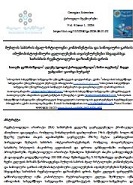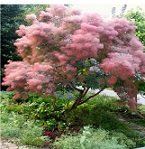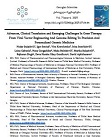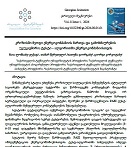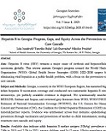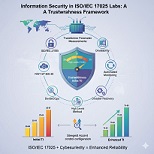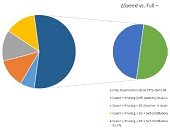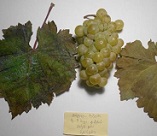ANALYSIS OF CRITICAL AIR VELOCITY FOR TUNNEL FIRES CONTROLED BY VENTILATION
Downloads
The article discusses scenarios for the development of fires in open spaces, in apartments and in tunnels. On the basis of a theoretical analysis of powerful fires, the possibility of the collapse of the ventilation system of tunnels is shown. Graphs of changes in fire power are given as a function of air velocity for fires controlled by ventilation in tunnels. Critical velocity ensuring efficient combustion product management has been analyzed for high-power tunnel fires. The dependence of the change in the critical value of the Froude criterion on the critical air velocity is shown. It is shown that it is not advisable to use the critical Froude number for analyzing the critical speed of fires with small magnitudes
Downloads
Metrics
Bird A., Carvel R. Handbook of Tunnel Fire Safety. Second edition. Thomas Telford
Limited, 2012, 694.
FIT - Thematic Network FIT ‘Fire in Tunnels’ is supported by the European Community
under the fifth Framework Program ‘Competitive and Sustainable Growth’ Contract n°
G1RT-CT-2006, 76.
UN, Economic and Social Council, Economic Commission for Europe, Report
TRANS/AC.7/9, 2001, 60.
UN, Economic and Social Council, Economic Commission for Europe, Report
TRANS/AC.7/9Add 1, 2002, 2.
UN, Economic and Social Council, Economic Commission for Europe, Report
TRANS/AC.7/13, 2003. 8.
UN, Economic and Social Council, Economic Commission for Europe, Report
TRANS/AC.7/15, 2004, 7.
UN, Economic and Social Council, Economic Commission for Europe, Report
TRANS/AC.7/11, 2002, 6.
The White Book 2001, Published in April 24, 2001, Sweet & Maxwell Ltd, ISBN 10:
, ISBN 13:9780421745803.
Haack. A. Fire Protection in Traffic Tunnels: General Aspects and Results of the
EUREKA Project, TUNNELING AND UNDERGROUND SPACE TECHNOLOGY, 1998,
, 2, 377-381.
Li Y.Z., Vylund L., Ingason H., Appel G. Influence of fire suppression on combustion
products in tunnel fires. The work Co-financed by the European Union, 2015, 70.
Lanchava O.A. Heat and mass exchange in permanent mine workings. Journal of Mining
Science, 1982, 1 (6), 87-92.
Lanchava O., Ilias N., Andras I, Moraru R., Neag I. On the Ventilation of Transport
Tunnels in the Présence of a Strong (Heavy) Fire. Annales of the University of Petrosani,
Petrosani (Romania), 2007, 9 (XXXVI), 1, 219-227.
Ланчава О.А. , Лебанидзе З.Б. По поводу коллапса системы вентиляции тоннеля
при сильном пожаре. Журнал «Транспорт», Тбилиси, 2008, 3-4 (31-32), 29-31.
Lanchava O., Medzmariashvili E., Ilias N., Khitalishvili G., Lebanidze Z. Prospects of
usage of transformable systems for extinguishing fire in tunnels. International Scientific
Conference “Advanced Lightweight Structures and Reflector Antennas”, Tbilisi, 2009,
-308.
Lanchava O.A. Hygroscopic heat and mass transfer in underground structures. GTU,
Tbilisi, 1998.
Lanchava O.A. Heat and mass exchange in newly driven mine workings. Journal of
Mining Science, 1985, 1 (5), 99-104.
Lanchava O., Ilias N. Some issues of thermal calculation of ventilation air for the metro.
Journal of Engineering Sciences and Innovation, 2017, 2 (2), 92-105.
Lanchava O., Ilias N. Complex calculation method of temperature, mass transfer
potential and relative humidity for ventilation flow in subway. Journal of Engineering
Sciences and Innovation, 2018, 3 (1), 69-84.
Vaitkevicius A., Carvel R. Investigating the Throttling Effect in Tunnel Fires. Fire
Technology, 2016, 52, 1619–1628.
Li Y.Z., Ingason H. Discussions on critical velocity and critical Froude number for smoke
control in tunnels with longitudinal ventilation. Fire Safety Journal, 2018, 99, 22-26.
Lanchava O., Nozadze G., Bochorishvili N., Lebanidze Z., Arudashvili N., Jangidze M.,
Tsikarishvili K. Criteria for evaluation of emergency firefighting in transport tunnels.
Transport Bridge Europe-Asia, Proceedings of conference, Tbilisi, 2014, 29-35.
Lanchava O., Abashidze G., Tsverava D. Securing fire safety for underground structures.
Quality-Access to Success, 2017, 18.
Lanchava O., Arudashvili N., Khokerashvili Z. Non-stationary transmission of heat and
hygroscopic mass between ventilation flow of metro and surrounding mining massif.
Mining Journal, Tbilisi, 2018, 40 (1), 34-42.
Lanchava O., Ilias N., Nozadze G. Some problems for assessment of fire in road tunnels.
Supplement of Quality-Access to Success: Bucharest, 2017, 18, (S1), 69-72.
Ilias N., Lanchava O., Nozadze G. Numerical modelling of fires in road tunnels with
longitudinal ventilation system. Supplement of Quality-Access to Success: Bucharest,
, 18, (S1), 85-88.
Li Y.Z., Lei B., Ingason H. Study of critical velocity and backlayering length in
longitudinally ventilated tunnel fires. Fire Safety Journal, Vol. 45, 2010, pp. 361-370.
Thomas P.H. The Movement of Smoke in Horizontal Passages against an Air Flow. Fire
Research Station. Boreham Wood. 1968.
Lee C.K., Chaiken R.F., Singer J.M., Interaction between duct fires and ventilation flow:
an experimental study. COMBUSTION SCIENCE AND TECHNOLOGY. 1979, 20, 59-72.
Danziger N.H., Kennedy W.D. Longitudinal ventilation analysis for the Glenwood
canyon tunnels. Fourth International Symposium on the Aerodynamics & Ventilation of
Vehicle Tunnels, BHRA Fluid Engineering. 1982.
Kennedy W.D. Critical velocity: past, present and future. Seminar of Smoke and Critical
Velocity in Tunnels, JFL Lowndes, 1996, 305–322.
Copyright (c) 2021 O. A. Lanchava

This work is licensed under a Creative Commons Attribution-NonCommercial-NoDerivatives 4.0 International License.




























